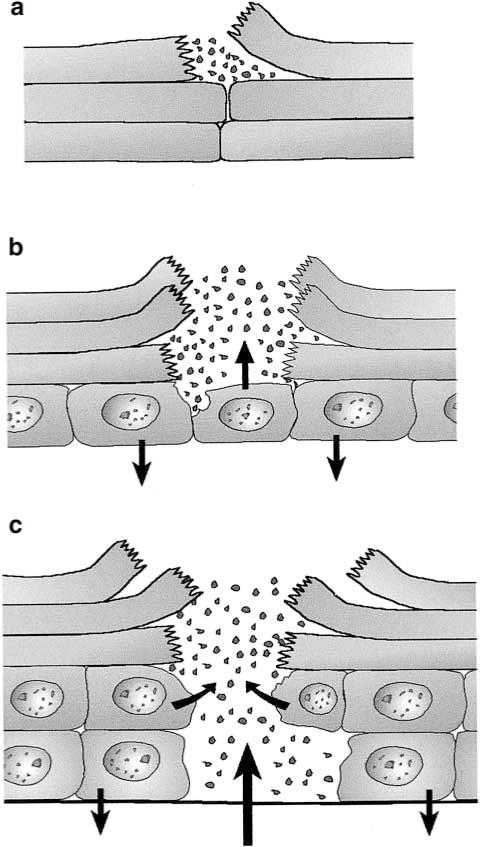Figure 1.

Different degrees of epidermal wounding elicit variable response patterns. (a) Intracorneal break up may activate antimicrobials from intra-and intercellular pools. This has not been studied so far, although the events are common. (b) Epidermal wound (fissure) extending into non-keratinized cell layer. This causes secretion of antimicrobials into the defect. Proinflammatory cytokines are released by neighboring keratinocytes. (c) Deep epidermal wound extending onto the basemen membrane. In addition to the aforementioned responses, chemokines released into the dermis will now attract neutrophils with the ability to phagocytose invading pathogens.
